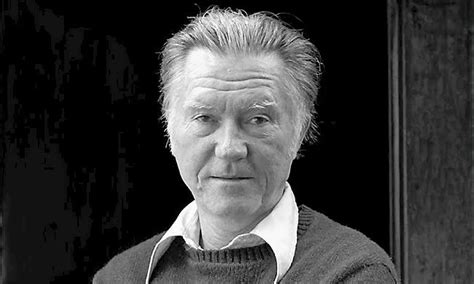
Photo: William Stafford, Credit: Robert B. Miller
In William Stafford's poem People Of The South Wind, he refers to the original Siouan tribal people of the Mississippi Valley, called Kanza. William Stafford himself is of Native ancestry, and his particular wisdom seems to come from such an original spirituality.
I don't know if the Kanza actually read exhalations in the cool air, like tea leaves or coffee grounds, but it sounds perfectly possible. I find it fascinating to consider what could be read into the shapes that vapour makes, each shape being entirely unique. The concept that these shapes "are living/in the woods now and are your friends./When you die – well, you go with/your last breath and find the others.", suggests that indigenous people from at least the 13th century had their own kind of knowledge of breath recycling in the atmosphere, several hundred years before the discovery of air molecules by Joseph Priestley in 1774. And how inspiring is the idea that an evil man's breath can be banished, drifting aimlessly through forests and deserts, lost forever. To know that, "when he dies, his last breath cannot find the others,/and he never comes together again".
People Of The South Wind
1
One day Sun found a new canyon.
It hid for miles and ran far way,
then it went under a mountain. Now Sun
goes over but knows it is there. And that
is why Sun shines – it is always looking.
Be like the sun.
2
Your breath has a little shape –
you can see it cold days. Well,
every day it is like that, even in summer.
Well, your breath goes, a whole
army of little shapes. They are living
in the woods now and are your friends.
When you die – well, you go with
your last breath and find the others.
And in open places in the woods
all of you are together and happy.
3
Sometimes if a man is evil his breath
runs away and hides from him. When he
dies his last breath cannot find the others,
and he never comes together again –
those little breaths, you know, in the autumn
they scurry the bushes before snow.
They never come back.
4
You know where the main river
runs – well, for five days below is
No One, and out in the desert
on each side his children live.
They have their tents that echo dust
and give a call for their father
when you knock for acquaintance:
„No One, No One, No One.“
When you cross that land the sandbars
have his name in little tracks
the mice inscribe under the bushes,
and on pools you read his wide, bland
reply to all that you ask. You wake
from dreams and hear the end of things:
„No One, No One, No One.“
Source: The Darkness Around Us Is Deep, William Stafford, Harper Perennial, 1993

